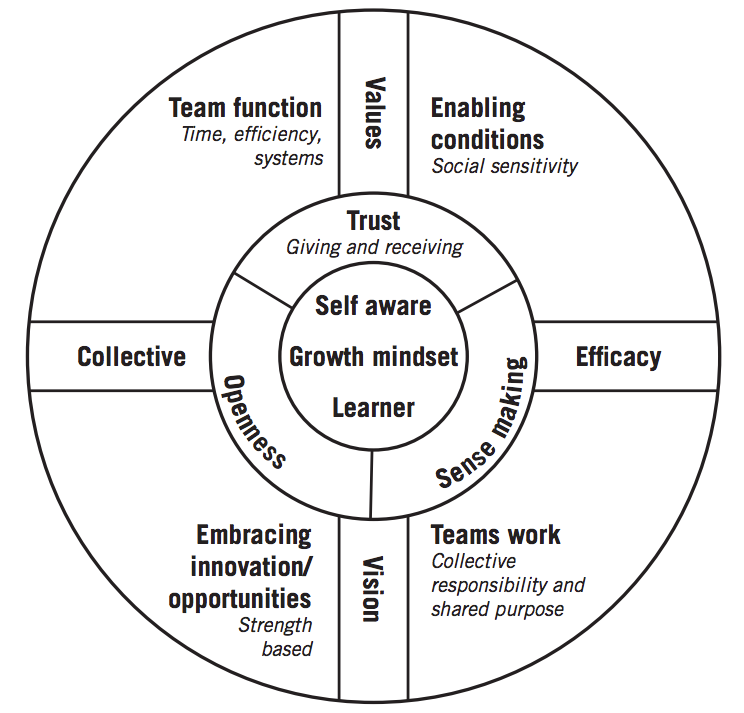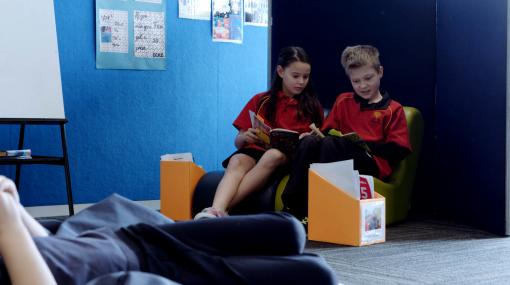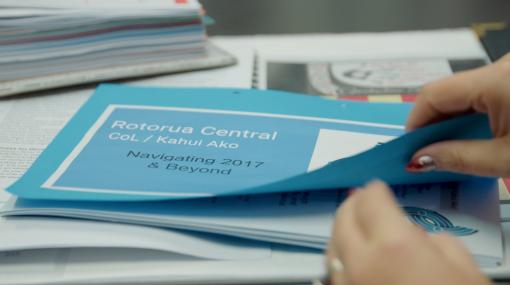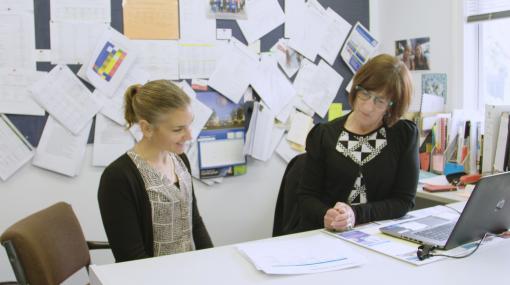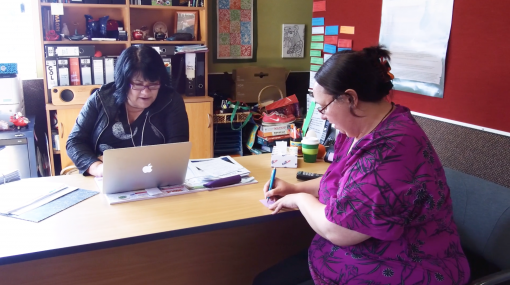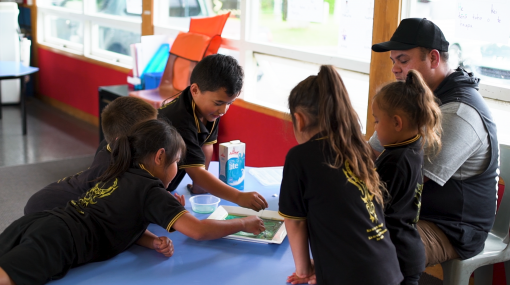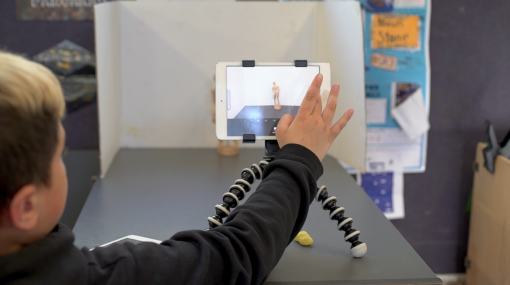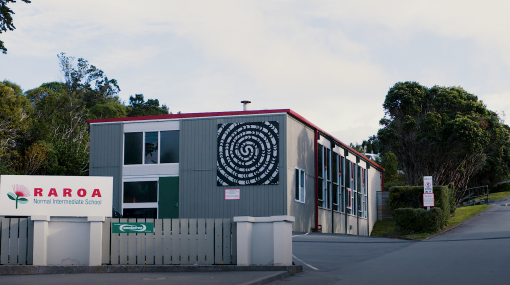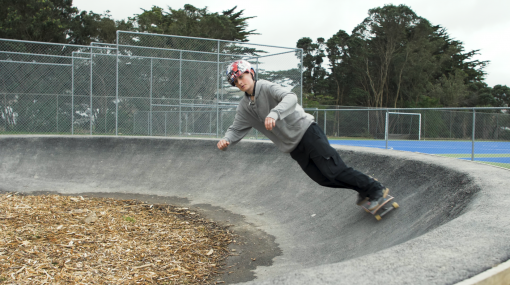Collaborative teaching
Collaborating to improve learner outcomes
Collaboration is the process of working together to achieve a common goal. In teaching, the common goal is always improved learner outcomes.
Teacher collaboration involves:
- debating, planning, and problem-solving together
- inquiring together, using evidence and research to guide decision-making
- capitalising on each other’s strengths and working with each other’s weaknesses
- actively contributing to a respectful and supportive learning environment.
Active collaboration is particularly important for creating a growth-based learning environment and for increasing student learning progress. Research shows that teachers who work together and learn from each other are more successful in improving student outcomes than those who work alone.
Through growth to achievement: Report of the review to achieve educational excellence in Australian schools , (March 2018)
Shifting from “my learners” to “our learners”
Active collaboration requires a shift from managing the learning of a single group of learners to taking collective responsibility for the success and wellbeing of all learners. Innovative learning environments (ILEs) are changing the ways that teachers teach, plan, and inquire into teaching together, but regardless of the teaching environment, effective collaboration requires a shift of thinking from “me” to “we” and from “my learners” to “our learners”.
We must stop allowing teachers to work alone, behind closed doors and in isolation in the staffrooms and instead shift to a professional ethic that emphasises collaboration. We need communities within and across schools that work collaboratively to diagnose what teachers need to do, plan programmes and teaching interventions and evaluate the success of the interventions. We need communities that promote and share professional development aimed at improving teacher effectiveness and expertise, that devise performance ‘dashboards’ to show success in learning and achievement and that build a coalition of the successful.
What works best in education: The politics of collaborative expertise
Teachers at Stonefields School discuss teacher collaboration in an innovative learning environment, including the shift they have taken from individual to collective effort. The teachers discuss the mentoring, support, dialogue, and questioning that come from teaching in a shared space.
Collaboration and inquiry
Collective inquiry is at the heart of teacher collaboration because it brings teachers together as learners, with a shared goal of improving learner outcomes. In professional learning communities, all teachers contribute as equals, seeking to understand and respond to what is happening for their learners. The focus is on problem-solving together, drawing on both research and student evidence to inform and evaluate changes to practice.
Collective inquiry fosters a trusting and open learning community in which mistakes are an accepted part of learning.
Teachers at St Patrick’s Silverstream discuss the benefits of participating in a professional learning community. They comment on the importance of taking ownership over your teaching practice, examining its impact, and being open to making changes.
Key benefits include:
- a sense of "all being in it together"
- having a critical friend to support you
- trying new things and getting feedback from students and colleagues on their impact
- being part of an ongoing process on reflection.
Benefits of active teacher collaboration
All members of learning communities benefit from effective collaboration.
- Learners benefit from collaborative teaching because teachers take collective responsibility for the progress of all learners. Teachers who know how to collaborate effectively model skills of collaboration to their learners.
- Collaborative teaching environments provide opportunities for teachers to learn from and with each other on an ongoing basis. Teachers can observe other teachers in action, engage in professional conversations about the impact of different approaches, and get feedback on their own teaching.
- Collaborative teaching teams capitalise on each other’s strengths, support each other’s professional growth, debate ideas, and problem solve together. This creates synergy, allowing teams to achieve more than they would if teachers work independently.
Educators and students at the Grow Waitaha Eduhui in Christchurch share the impacts of collaborative teaching and learning. Teachers are seeing higher levels of student engagement and improvements in achievement. Students comment on the benefits of working collaboratively and having agency over their learning.
Dr. Julia Aitken discusses the benefits of students being able to observe teachers collaborating, a skill that has many real-world applications. She comments that effective collaboration may involve working constructively and professionally with people you don’t naturally get on with.
Developing collaborative capabilities
To collaborate effectively, teachers need to be deliberate about developing their collaborative capabilities. This includes:
- actively contributing to a safe and supportive teaching environment
- being skilled at managing conflict
- having a growth mindset
- taking collective responsibility for the wellbeing and success of all learners.
Key factors that contribute to collaborative teaching
This diagram from Stonefields School illustrates key factors that contribute to collaborative teaching.
More information »
- Creating collaborative effectiveness: One school's approach – An article by Chris Bradbeer and Sarah Martin, Stonefields School.
Relational trust
Relational trust is a prerequisite for engaging in challenging conversations and for creating an environment where participants are open to their practice and the outcomes they achieve for students being made transparent. Where there is relational trust, members feel free to open up and acknowledge what they do not know, take risks, and use their knowledge and expertise to support others in the community. Trust relationships facilitate the sharing of data and information about students and the provision of supported educational pathways.
Relational trust takes time and effort to establish. Key factors that can contribute to relational trust include:
- keeping learner needs at the centre of everything you do
- encouraging each other to try new things
- being familiar with people’s strengths and suspending judgement about their weaknesses
- being open about your own mistakes and challenges
- accepting other teachers’ “non-negotiables”
- learning how to engage in difficult conversations
- having strategies in place for when things aren’t going well.
Teachers at the Grow Waitaha Eduhui explain successful collaboration is supported by:
- building relationships with your colleagues – identifying teacher strengths and areas that need work
- understanding what collective responsibility means
- knowing your learners and keeping the needs of the children at the centre of decision making.
Establishing a shared vision for collaboration
Having a shared vision is an important part of successful collaboration. Teachers who understand the impact collaboration can have on learners, and on their own teaching practice, are more likely to commit time and energy towards collaborative practices.
A key part of the process is deciding together on the systems, approaches, and measures that will help the team collaborate successfully.
Dr Julia Aitken discusses the importance of having a shared vision for the purpose of education. She highlights the importance of understanding the “why” of change rather than just changing for the sake of it.
Shirley Primary School – Using team charters for collaborative practice
Teachers at Shirley Primary School developed a team charter to guide the way they collaborated. They asked:
- How will effective collaboration improve outcomes for our learners?
- Why is working collaboratively important?
The process involved:
- getting to know each other’s strengths, skills, and ways of working
- developing a shared understanding of the purpose and benefits of collaboration
- clarifying how to work together effectively
- identifying practices that could support them to collaborate effectively
- ensuring the team charter aligned with the school vision and values.
Several useful resources are linked to from this case study
Professional conversations
Professional conversations are conversations that focus on improving learner outcomes. Examples include:
- observations and improvement-focused feedback
- identifying issues of practice and problem solving them together, often as part of a professional learning community
- critically examining student results and exploring what they mean for professional practice.
Dr Helen Timperley, Professor of Education at the University of Auckland, discusses key findings from her literature review examining the research on professional conversations at schools. She describes enablers for effective professional conversations .
- Resources – the tools, materials, protocols, and expertise that help to shape conversations.
- Relationships – relationships of trust, challenge, and mutual respect that lead to participants feeling empowered to make a difference.
- Processes – processes that keep the focus of conversations on learner outcomes.
- Knowledge – enabling knowledge that leads to changes in practice.
- Culture – an inquiry-focused and problem-solving culture in which participants take collective responsibility for problem solving and creating change. A key factor of developing such a culture is teachers being prepared to examine their own practice.
Managing conflict
Developing the communication skills required to manage conflict is essential for successful collaboration.
A key challenge for all teachers is knowing how to have difficult conversations with colleagues (conversations that you might prefer to avoid).
The small stuff, often quite low level, can have huge “get up your nose” potential. How tidy, how timely, of how your hub colleagues do a wall display has the potential to cause dissonance, or what we have simply come to term rub amongst team members.”
Learning how to address points of difference with a colleague includes understanding the conversation that needs to be had, when it needs to happen, and the right person to have it with.
Kirsten Harris-Tatana from South Hornby School discusses the steps teachers employed to establish trust and build relationships that support collaboration. Using Joan Dalton's Learning Talk series, the team identified keys to building successful relationships, including:
- discussing, acknowledging, and agreeing on non-negotiables before working in a collaborative space
- taking time to discuss small problems
- supporting new team members by seeking their ideas and input into already established systems and processes.
We have watched the most synergetic teams provide time and forums to have conversations about how individuals like to be supported, how they like to be communicated with - “elephant time” on meeting agendas, where potential elephants growing within the hub are addressed and worked through.
A continuum of conflict management
This table shows how teachers at Stonefields School define a continuum of conflict management.
| Manages conflict: The capability to proactively address and resolve conflict through collaborative sense-making | |||
| Ineffective | Functional | Effective | Synergetic |
| Enters into conversations that can be harming or unproductive for the organisation. Conversations had in wrong setting with wrong people that has the potential to undermine or diminish trust of another. | Potential conflict is avoided and not talked about. People function professionally, often desired outcome not achieved because of fear of hurting another’s feelings. | Conflict addressed through sense-making conversations. | When dissonance (rub) is experienced "growth mindset" sense-making conversations follow with the source (right person in the right context, right time) to move things forward. Sense-making is inculturated as "how we do things in our team". Relationships deepen as a result of how the sense-making conversations are carried out. |
Source: Creating collaborative effectiveness: One school’s approach .
More information »
- Feeling you need to have that conversation? ...Help is here – a blog post from CORE Education.
Team teaching
In innovative learning environments (ILEs), teachers often work directly with another teacher (or teachers) to meet the learning needs of a large group of learners. Benefits of this approach include:
- the ability to group learners according to need, for example, by running needs-based workshops
- combining expertise, including cross-disciplinary knowledge
- opening up the teaching and learning environment so that teachers and learners learn from one another
- opportunities to experiment with alternative approaches to teaching and learning.
Dr Julia Aitken discusses the benefits of working in a collaborative learning environment. Teachers are able to provide targeted support to small groups of students. Collaborative learning environments provide opportunities for teachers to learn from each other through observation and feedback. Dr Aitken provides examples of ways secondary school teachers collaborate across disciplines.
Educators from secondary schools around Canterbury share their cross-curricular approach to collaborative teaching and learning.
Participants of the Canterbury Delving Deeper Conference 2016 share how a change to more collaborative practice has worked for teachers and learners.
Models of team teaching
ILEs provide opportunities for teachers to structure the way they work with students in different ways, depending on the learning needs of the students.
Models of team teaching include:
- One teach, one observe: teachers take turns teaching and observing. The purpose of the observation is to gather data that can be analysed later.
- Station teaching: each teacher takes responsibility for teaching a different skill or area of content. Students move from one station to the next. Some of the stations can involve independent student learning.
- Parallel teaching: teachers teach the same content to different groups. This can be used to differentiate the learning experience, covering the same content but at a different pace or with extra scaffolding.
- Tag-team teaching: both teachers share the delivery of content to a group of learners.
Read more about models of team teaching:
Collaborative planning and assessment
Planning and assessing collaboratively helps teachers to better meet the needs of diverse learners.
Collaborative planning
Collaborative planning provides opportunities for teachers to work to their strengths. At secondary schools, collaborative planning can help to make cross-disciplinary connections evident, with students exploring key concepts in different contexts.
Anita Head, year 5–6 team leader at Halswell School, discusses the enablers of student success within their innovative learning environment. Shared planning via Google Docs has been important to ensure that each staff member understands what's happening for each of their students. Anita explains, "The key things that have enabled successful learning for our students have been that the staff are all working collaboratively together. So we’re learning from each other and developing any of our needs and our strengths in our own practice and we’re able to offer a wider range of opportunities for the students.
Planning tools and templates
Everyone’s In – An inclusive planning tool that supports teachers to apply principles of Universal Design for Learning when planning.
Collaborative planning template examples – Crowd-sourced Google slides with screenshots of teachers’ shared planning.
Collaborative assessment
The primary purpose of assessment is to improve students’ learning by identifying gaps in what students know, understand, or can do. Because most assessment occurs naturally through everyday classroom interactions, collaborative assessment can require some creativity. For example, some schools track information on behaviour and learning using SMS. (The SMS has been set up to produce a monitoring grid once data has been submitted via text, so teachers only have to enter the data once.)
While larger classes may mean it takes more time to get to know students and their learning needs, having more teachers means that while one teacher works with a group, another can gather data from individual students. Conducting one-to-one formative and summative assessments provides a much clearer understanding of individuals’ skill levels. This data can then enable teachers to group and regroup learners for activities according to the skill being taught or practised. Share data gathered through online tools that work best within your team, for example your SMS, Google spreadsheets or docs.
Supporting students to use online tools to demonstrate their learning provides teachers with easy access to their learning processes, enabling virtual feedback and feedforward.
Lisa Dovey, year 7–8 team leader at Halswell School, discusses the benefits of collaborative teaching. Her team uses Google Docs and Google Hangouts to support collaborative planning, teaching, and assessment. She explains, "We do a lot of planning together, which is really fantastic. It means that all of our strengths are put together."
Formal assessment tools
Formal assessment tools can be used to provide valid and reliable information on student learning. Here are some examples:
- Learning Progressions Framework (LPF) – a tool for tracking learners’ current levels and next steps (year 1-10).
- Progress and Consistency Tool (PaCT) – supports teachers to make consistent judgments about learner progress.
- Evaluation Associates provides matrices, templates, and review tools for New Zealand teachers.
Other examples of assessment tools are available via TKI .
Filter by: Primary Secondary Collaborative teacher inquiry
Sorry, no items found.
Resources
The goal of Grow Waitaha is to assist schools to achieve pedagogical change in a meaningful and manageable way, with a network of support, and to put learners at the centre of that change. This page links to Grow Waitaha's list of resources on approaches to collaborative teaching.
Research and readings
Gina Benade researched what leading effective and disciplined collaboration within and across schools looks like to better understand how this process can enhance and influence student achievement.
A framework for transforming learning in schools: Innovation and the spiral of inquiry
Using a range of examples from New Zealand, Australia, and Canada, this paper makes the case for new approaches to designing learning and teaching and how we might achieve this. It also provides a model for long term PLD within schools.
Hattie explores developing collaborative expertise across of all parts of the education system – collaboration horizontally (from teacher to teacher, from school to school) and vertically (from teacher to school leader to policy-maker).
High-quality collaboration benefits teachers and students
A summary analysis of the study by Ronfeldt, M., Farmer, S., McQueen, K., & Grissom, J. (2015). Teacher collaboration in instructional teams and student achievement. American Educational Research Journal, 52 (3), 475-514.
Creating the conditions for effective teacher collaboration has been seen as a critical component of the work that leaders have been engaged in at Stonefields School since it opened in 2011.
This publication is designed to support Communities of Learning | Kāhui Ako by bringing together research findings about effective collaboration in education communities. It is supported by the publication Communities of Learning | Kāhui Ako: working towards collaborative pratice.
